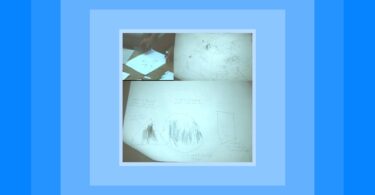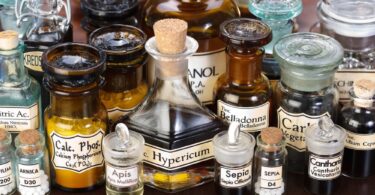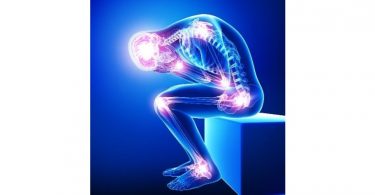Atheroma
Atheroma is a thickening of the arteries due to an inflammatory increase of the connective tissue associated with more or less fatty degeneration and calcification. The arteries are thickened, tortuous and rigid from chronic endarteritis . If located in the lower extremities gangrene may supervene. Atheroma of the coronary arteries may produce serious heart symptoms, as angina, etc. Old age, gout, rheumatism, alcoholism, syphilis, lead poisoning, nephritis, calcareous water and laborious work, are the usual etiological factors.
The symptoms of atheroma are usually a sluggish high tension pulse, accentuation of the second aortic sound, palpitation, dyspnea, anginoid pains and hypertrophy of the left ventricle, urine increased and at times albuminous, headache, vertigo, disturbed sleep, failure of memory and ringing in the ears.
As sequelae there may be cerebral congestion, apoplexy, fatty heart, dilatation, angina pectoris, aneurism, interstitial nephritis and gangrene of extremities. The treatment should include a careful diet, no stimulants, and a regulation of the habits. The remedies indicated may be Bryonia, Secale, Lachesis, Arsenicum, Carbo veg., Lycopodium, Carbolic acid. See hypertrophy, angina pectoris and general heart therapeutics. In gangrene of the extremities operate high up and early.
Aneurism
Aneurism is a circumscribed dilatation of an artery. This may occur in any artery but is found most frequently in the aorta as a result of arterial degeneration. The sign of an aneurism is a murmur or bruit loud and booming in character, systolic in time, heard best over the aorta or base of the heart with an abnormal area of dullness and pulsation and symptoms of pressure. Dyspnea, cough, pain or distress serve to locate the aneurismal tumor.
The conditions of life which lead to arterial degeneration, i. e. rheumatism, gout, alcoholism, syphilis, cancer, drugs, laborious work, are predisposing causes. The male sex at middle life suffer most, as sudden exertion is the most common exciting cause. Aneurisms are divided into true and false. When the internal coat of the artery alone gives way, allowing the blood to escape between the layers it is termed false. When all the coats yield it is a true aneurism and may be fusiform, saccular and cylindrical. The prognosis is always grave. The average duration is from one to two years. Death takes place from rupture, exhaustion or heart failure.
In the treatment where it is possible to reach the artery as in abdominal aortal aneurism, compression has been resorted to with good results. The predisposing cause should receive attention. Rest in bed for two or three months should be insisted on, a nourishing milk or meat diet should be given, avoid stimulants and excitants. Warm milk makes an excellent stimulant as well as food.
Select the remedy carefully. Lycopodium 12 has cured aneurism of the carotid (Hughes). If the attack is due to a sudden strain or injury, Arnica; if from fear or fright, Aconite; if from syphilis, Mercurius, Kali hydr. or Nitric acid; if from alcoholism, Arsenicum or Nux vomica; if from fatty degeneration, Phosphorus; if from fibrous inflammation and degeneration, Bryonia; if there is great arterial excitement and delirium, Veratrum viride; if circulation sluggish, Digitalis. Secale has cured aneurism. Consult Carbo veg., Spigelia. See Heart Therapeutics.
Embolism and Thrombosis
Embolism is an occlusion of an artery from a fibrinous clot, as the result of a valvular disease. A calcarous deposit on the valve as well as fibrin may be washed off and occlude an artery in the kidneys, spleen, brain or in an extremity. Local inflammation is a prominent symptom and the seat of pain assists in the diagnosis. The part becomes blue, swollen and insensible. Rest is of first importance in treatment. The remedies indicated will depend upon the location and severity of the symptoms. Aconite for fever and restlessness. Lycopodium, Calcarea, Phosphorus, Graphites, Silicea and Sulphur have been suggested.
Thrombosis is a blocking of the local circulation either spontaneously, after injuries or from slow and imperfect circulation forming a clot. In thrombosis the part becomes pale and edematous. The remedies are Aconite for first stage. Hamamelis, Lachesis or Lycopodium may be indicated. If suppuration threatens Sulphur or Hepar. Rest and a supporting diet.
Varicosis
This is an inflammation of the veins, usually those of the lower extremities, but may be in any part of the body. Positions and conditions that interfere with the venous current are the causes. Varicosis causes dropsy in old people. The curative remedies are few. The most prominent are Hamamelis, Pulsatilla, Carbo veg. or Sulphur. If the varices ulcerate then Arsenicum, Lachesis or Hepar should be consulted. To prevent rupture and assist the venous circulation of the extremities, an elastic stocking should be worn. Posture and bathing with Hamamelis and rubbing at night so as to assist the circulation, are helpful.
Dropsy— Cardiac
Dropsy is the unnatural accumulation of serous fluid in the tissues or cavities of the body. It is usually a symptom. The causes are (1) venous stasis from heart, liver and lung diseases and from local obstructions to the circulation, e. g., pregnancy, tumors, constricting clothing, occupations, etc.; (2) changes in the blood, e. g., anemia, inflammation, Bright’s disease, etc. Cardiac dropsy usually begins in the feet and ascends. Dropsy is not always fatal at first; but subsequent attacks finally result in death. The remedies that have been of service in dropsy, dependent upon heart disease, are Arsenicum, Lycopodium, Spigelia, Carbo veg., Digititalis and Kali carb. For general anasarca see also Hellebore, Apis, Apocynum, Sulphur Consult Heart Therapeutics.
Cyanosis
Cyanosis is a blueness of the surface of the body, especially of the lips, from insufficient oxidation of the blood. The causes of cyanosis are (1) conditions affecting the entrance of air, as croup, edema of the larynx, tumors or foreign bodies in the air passages, tumors pressing on the air passages, emphysema, chronic bronchitis, pneumonia, pleurisy, paralysis of the respiratory muscles, as in bulbar palsy, and spasms of the respiratory muscles as in epilepsy, tetanus, etc., heart spasms; (2) all forms of heart disease ending in pulmonary congestion, where the blood does not become oxidated; (3) patulous formen ovale with stenosis of the pulmonary orifice. This is a congenital condition. Here the rapid admixture of the blood prevents the oxidation of the tissues and death ensues sooner or later. “Digitalis is very useful in this disease, especially in the case of new-born infants; Sulphur and Calcarea are still better.” (Jahr.) See Heart Therapeutics.
Heart Diseases Causing Sudden Death
The diseases of the heart that occasion sudden death are:
(1) Hypertrophy of the left ventricle with atheromatous arteries
(2) Fatty degeneration
(3) Angina Pectoris with organic lesions
Excerpted from Hand book on the diseases of the heart and their homeopathic treatment” Thomas C. Duncan, M. D., Ph. D., LL. D.,





